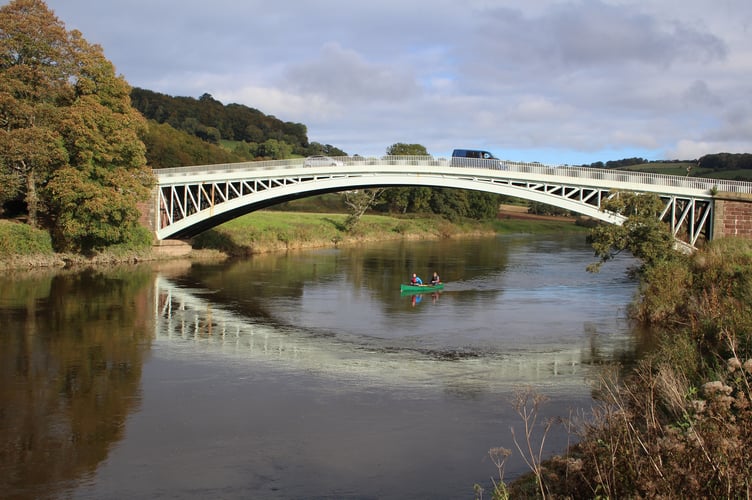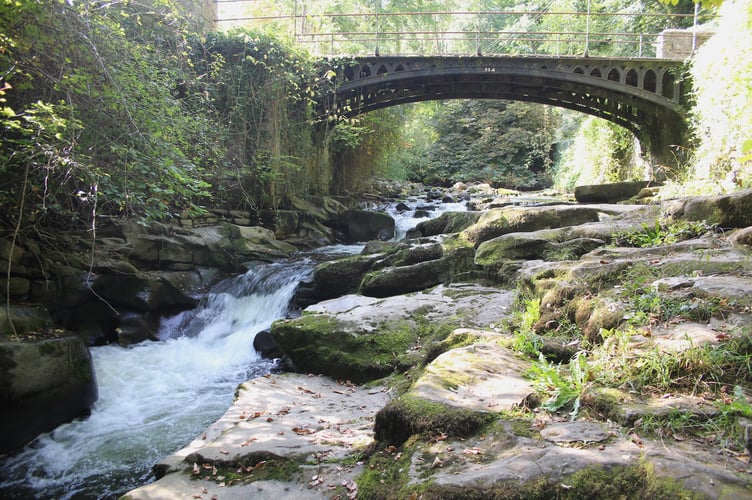THE first iron bridge in the world was built over the River Severn at Coalbrookdale in Shropshire in 1777 to 1780 by Abraham Darby III and it inspired the construction of similar structures, particularly when it was seen how the bridge survived a great flood in 1795, which had severely damaged every other bridge over the River Severn.
Today, this bridge is Britain’s best known industrial monument and a tribute to the skill and daring of the eighteenth century Shropshire Ironmasters.
It is a single span of 30 metres, with five semi-circular ribs. A total of 378 tons of iron were used at a cost of £6,000 and it was in full use for 150 years. Then in 1934 it was finally closed to vehicles and designated an Ancient Monument.
The crossing is probably the only 18th century iron bridge which remains intact, and world famous it gave its name to the town that grew around it and to the wooded gorge that was the birthplace of the Industrial Revolution. In 1986 it became a UNESCO World Heritage Site.
In Monmouthshire we have three elegant cast iron bridges and the best one is Chepstow Bridge which spans the River Wye.
Described as the finest Georgian Regency arch bridge in Britain it was designed by John Urpeth Rastrick of Bridgnorth, who modified an earlier design by John Rennie, the engineer who built Waterloo Bridge in London.
He had estimated a cost of £41,890 for a bridge at Chepstow which was considered too expensive. So Rastrick offered to build the bridge for £17,150 and won the contract.
The final cost was actually £20,000, but this was still less than half of Rennie’s estimate. It is the only bridge that was built by Rastrick and the following year he went back to constructing steam engines at Stourbridge.
The ironwork was cast at Bridgenorth, Shropshire in 1815 and it was built by the Bridgnorth firm of Hazeldine, Rastrick & Co to replace an earlier wooden bridge which provided a vitally important link between South Wales and the south west of England.
It crosses a river which has one of the highest tidal ranges in the world and is Grade I Listed.
Made of cast iron in five arches, it has a centre span of 112ft, intermediate spans of 69ft, and outer spans of 33ft. The bridge was opened on 24 July 1816, with an elaborate ceremony.
The style of this bridge was inspired by the work of Thomas Telford and today it is the largest iron arch bridge remaining from the first half-century of iron and steel construction, before the invention of suspension bridges.
At its centre, the road is 13 feet above the highest tides and 62 feet above the river bed. The views from here, up and down the river are excellent and at the same time you are looking from Wales into England or from Monmouthshire into Gloucestershire.
The bridge is not wide enough for two-way traffic, so traffic lights are needed to control access from each direction.
In 1984, it was superseded, except for local traffic, by the modern inner relief road bridge which was built further downstream to take the A48 traffic across the river.
Prior to that all road traffic to and from Gloucestershire had to pass through the narrow town arch in Chepstow and over the old cast iron bridge.
Celebrations to mark 200 years since the opening of the bridge took place on July 24, 2016, when around 1,000 people turned out to watch a procession through Chepstow and a re-enactmen of the original opening ceremony.
Further up the Wye, two miles north of Llandogo, is Bigsweir Bridge,which is at the normal tidal limit of the river and has been described as the most elegant cast iron bridge in Wales.
Its location at Bigsweir is said to be named after Budic the father of St Oudoceus who founded the church at Llandogo in the sixth century.

This single arch cast iron road bridge was built in 1827 by Charles Hollis of London, the designer of Windsor Bridge, as part of the new turnpike road which was opened in 1829 by the Chepstow and Monmouth Turnpike Trust.
Cast at Merthyr Tydful, the arch is 55 yards long and the ribs are in sixteen sections. It gracefully spans the river and just like Chepstow bridge it connects two counties and two countries.
The old toll house on the Welsh side of the river is still standing, but no longer in use. From 1828 this small cottage was home to the toll keeper who collected a fee from travellers crossing Bigsweir Bridge.
To cross on foot cost a penny, sixpence for a coach and carriage and five pence for a herd of 20 calves, pigs and sheep.
The Royal family, Royal Mail carriers, soldiers and people going to church on Sunday were exempt from paying.
When the Turnpike Trust was abolished in 1879, the last toll collectors here were William and Mary Parry. Although no longer employed by the Trust they continued to live here with their six children.
Mary Parry and her son James were still living there in 1917.
The bridge became a Grade II-listed structure in 1988 and because of its narrow width, modern traffic using the A466 is controlled by traffic signals at either end
In 1824 Smart’s Bridge in the Clydach Gorge was built over the River Clydach to link Clydach Ironworks with the offices of the Ironworks Company, which stood on the other side of the river. They were demolished when the A465 (Heads of the Valleys Road) was first constructed.

Just who Mr Smart was is not known but this early cast iron bridge was restored in 1986 by the team involved in the excavation and conservation of the Clydach Ironworks.
The bridge was totally dismantled, treated with oxalic acid (a rust inhibiter) and reassembled.
One of the end plates had been fractured so it was replaced by a new one cast in Abertillery.
The entire structure was then painted with bitumastic paint and new railings were recreated in a similar style to the railings that were known to have been on the bridge in the 1950s.
Stone walls were then erected on each bank to hold the terminations of the hand rails.




